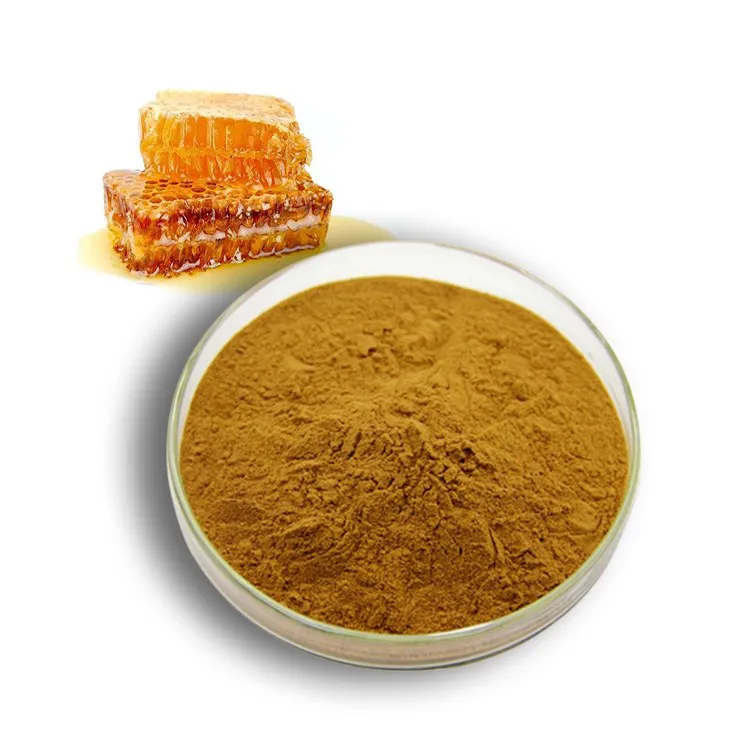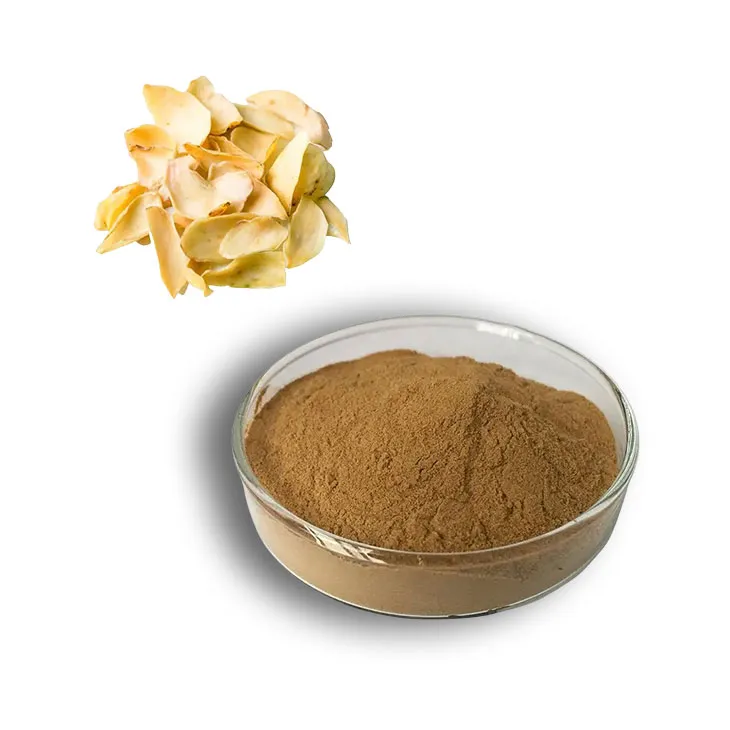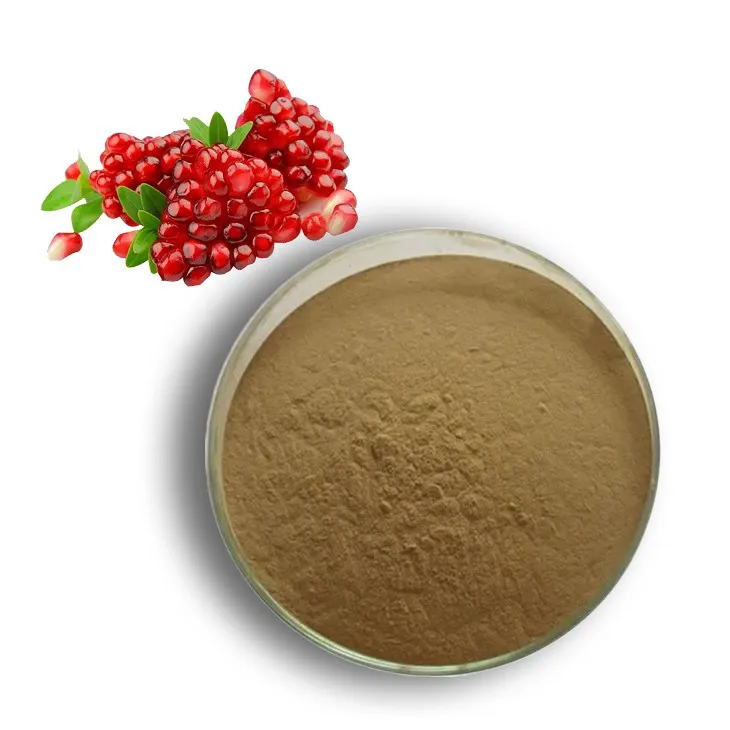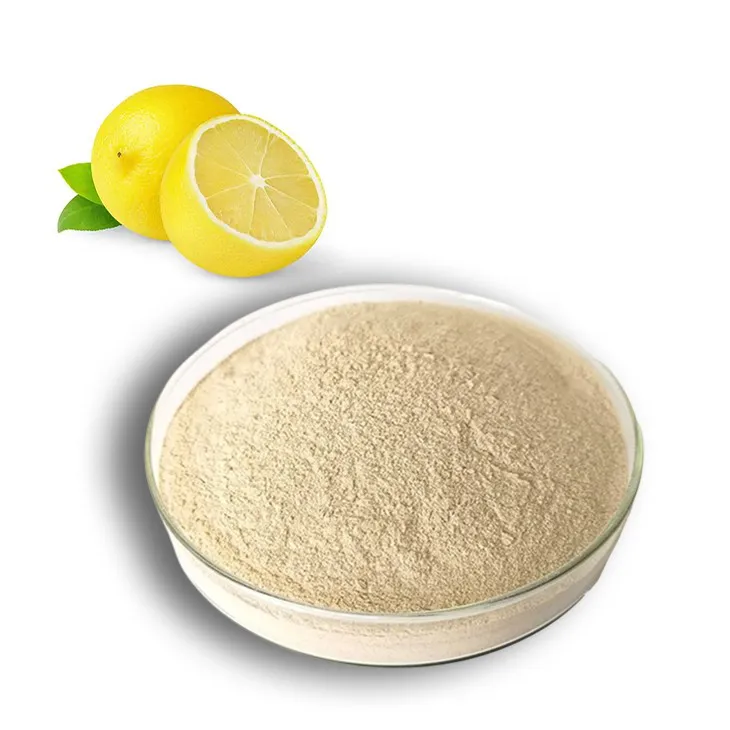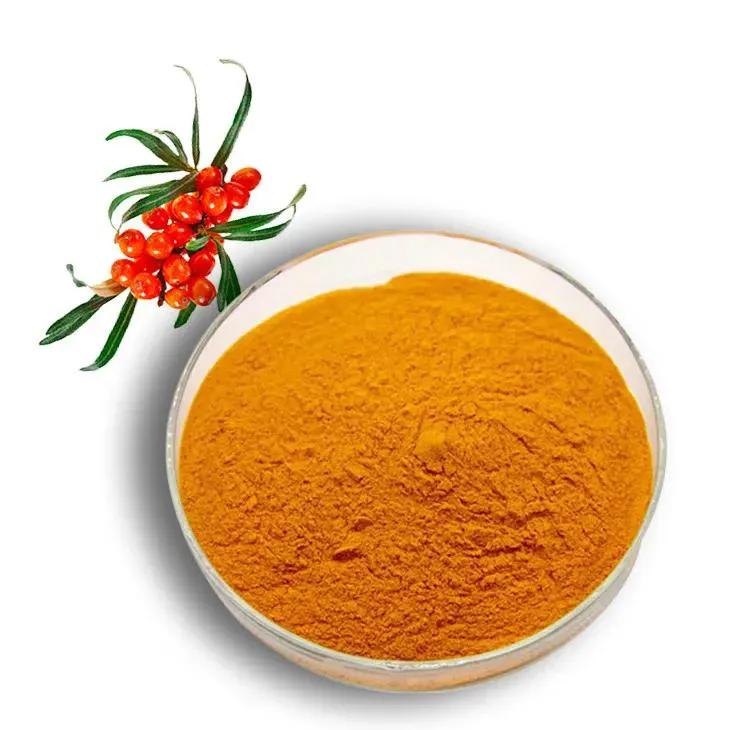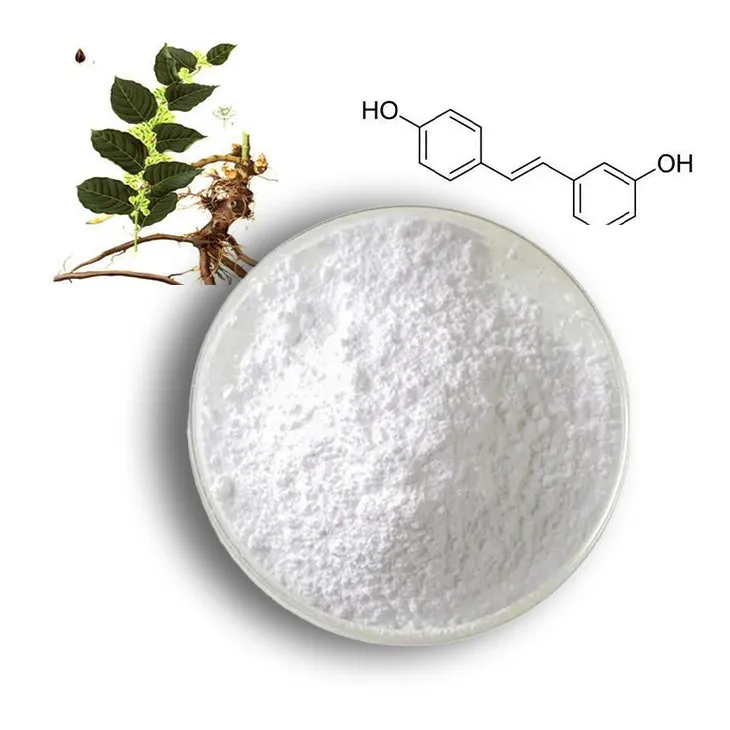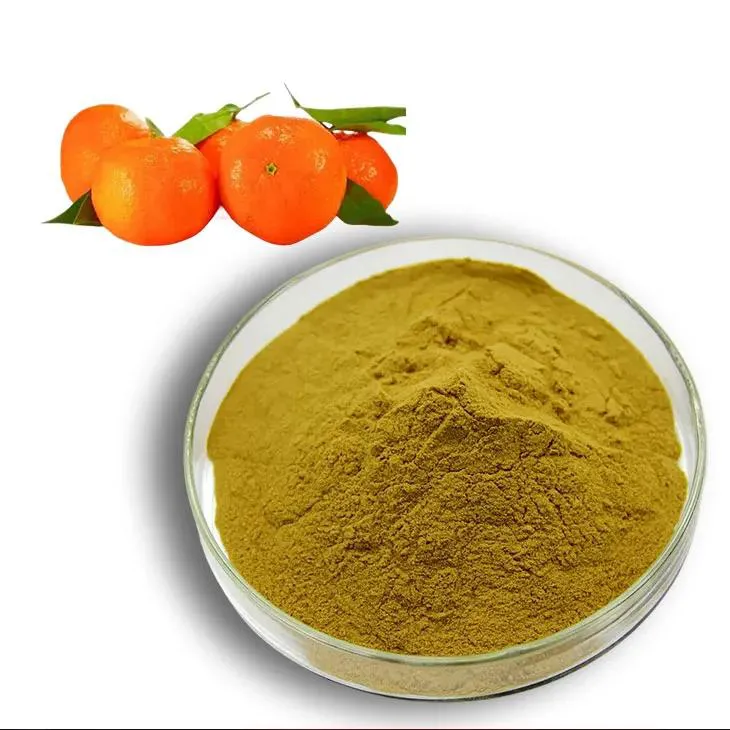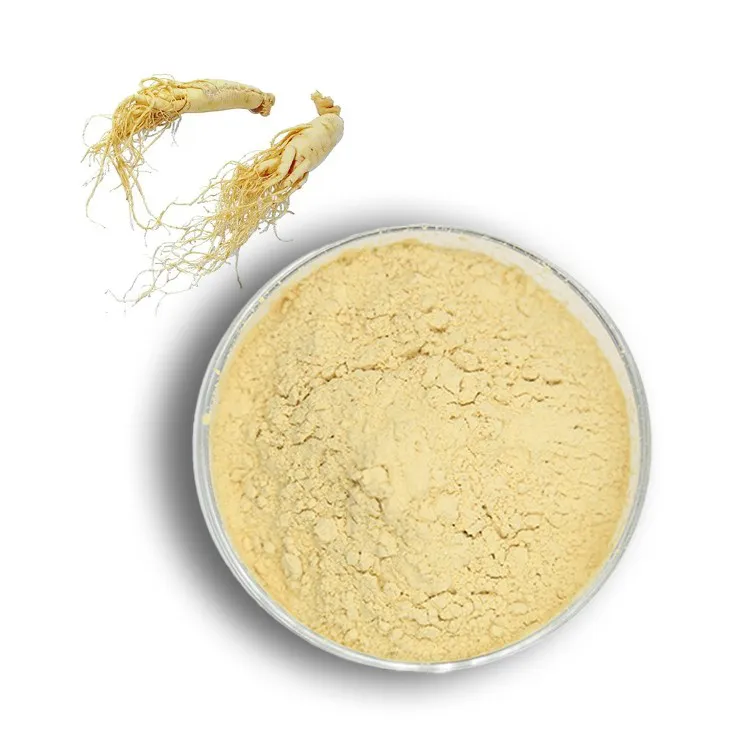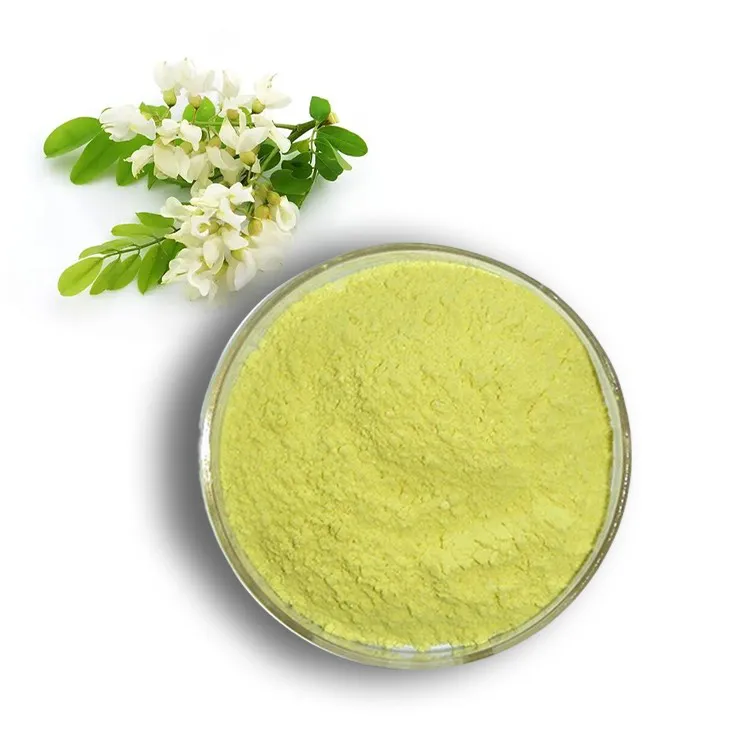- 0086-571-85302990
- sales@greenskybio.com
how to extract sugar from stevia plant
2023-09-26
1. Understanding Stevia's Sugar Content
1. Understanding Stevia's Sugar Content
Stevia, scientifically known as Stevia rebaudiana, is a perennial shrub native to South America, particularly in Brazil and Paraguay. It has gained significant attention as a natural, calorie-free sweetener due to its high sugar content. Stevia leaves contain several steviol glycosides, which are the compounds responsible for its sweetness. The primary glycosides are stevioside, rebaudioside A, and rebaudioside C, with rebaudioside A being the sweetest and most commonly used in commercial products.
The sweetness of stevia is often compared to that of sugar, with stevia being up to 300 times sweeter. This means that a small amount of stevia can replace a larger quantity of sugar, making it an ideal alternative for those looking to reduce their sugar intake or for individuals with diabetes.
Stevia's sugar content is not in the form of glucose or fructose, which are the sugars found in traditional sweeteners. Instead, it is composed of steviol glycosides, which are not metabolized by the body in the same way as regular sugars. This results in a negligible impact on blood sugar levels and glycemic response, making stevia a preferred choice for health-conscious consumers and those with dietary restrictions.
Furthermore, stevia is considered safe for consumption by various health organizations, including the World Health Organization (WHO) and the US Food and Drug Administration (FDA). However, it is essential to note that the extraction process and purity of the final product play a crucial role in ensuring the safety and quality of Stevia Extracts.
In summary, understanding stevia's sugar content involves recognizing the unique composition of its steviol glycosides, their significantly higher sweetness compared to sugar, and the health benefits associated with their minimal impact on blood sugar levels. This foundational knowledge is essential for appreciating the potential of stevia as a natural sweetener and for guiding the subsequent steps in the extraction process.
2. Harvesting Stevia Leaves
2. Harvesting Stevia Leaves
Stevia is a perennial shrub native to certain regions of South America and is now cultivated in various parts of the world due to its high sugar content in its leaves. The process of extracting sugar from the stevia plant begins with the harvesting of its leaves. This section will delve into the best practices for harvesting stevia leaves to ensure optimal quality for sugar extraction.
Choosing the Right Time for Harvesting
The stevia plant typically reaches maturity within one to two years from planting. The leaves are most potent in terms of sugar content when they are fully grown but before the plant begins to flower. Harvesting is usually done during the dry season to minimize the risk of disease and to ensure that the leaves are as dry as possible, which simplifies the extraction process.
Techniques for Harvesting
Manual harvesting is the most common method, where leaves are picked by hand. It is important to handle the leaves gently to avoid bruising, which can lead to a reduction in the quality of the final extract. Care should be taken to select healthy leaves that are free from pests and diseases.
In some commercial operations, mechanical harvesting may be employed to increase efficiency. However, the machinery must be designed to minimize damage to the leaves and to avoid contamination from soil or other debris.
Post-Harvest Handling
Once the leaves are harvested, they should be transported to the processing facility as quickly as possible to prevent wilting or degradation of the leaf's sugar content. The leaves should be kept in a cool, dry place during transit to preserve their quality.
Yield and Sustainability
Harvesting should be done in a sustainable manner to ensure that the stevia plant is not over-exploited. Over-harvesting can lead to a decline in the plant's health and a reduction in future yields. It is essential to rotate the areas of the plant that are harvested to give other parts a chance to regenerate.
Conclusion
Proper harvesting techniques are crucial for obtaining high-quality stevia leaves that can be effectively used for sugar extraction. By choosing the right time, using appropriate methods, and ensuring careful post-harvest handling, the quality of the Stevia Extract can be maximized, leading to a sweetener that is both natural and beneficial for health-conscious consumers.
3. Preparing the Leaves for Extraction
3. Preparing the Leaves for Extraction
Before the extraction process can begin, it is crucial to properly prepare the stevia leaves to ensure the highest quality and yield of the sugar extract. This step involves several sub-steps that are essential for the overall success of the extraction process.
Cleaning and Washing:
The first step in preparing the leaves is to thoroughly clean and wash them to remove any dirt, debris, or pesticides that may be present. This can be done using a gentle stream of water and a soft brush to avoid damaging the delicate leaves.
Drying:
After washing, the leaves need to be dried to reduce their moisture content. This can be achieved by air-drying or using a dehydrator. Drying the leaves not only helps in concentrating the stevia content but also prevents the growth of mold and bacteria during storage.
Crushing or Grinding:
Once the leaves are dry, they are crushed or ground into a fine powder. This increases the surface area of the leaves, making it easier for the extraction solvent to access the stevia compounds.
Soaking:
In some extraction methods, the crushed or ground leaves may be soaked in water or another solvent to facilitate the release of the stevia compounds. The duration and temperature of the soaking process can vary depending on the specific extraction method being used.
pH Adjustment:
The pH of the leaf preparation may need to be adjusted to optimize the extraction process. This can involve adding an acid or a base to the preparation to create the ideal conditions for the extraction of the stevia compounds.
Filtration:
Before the extraction process begins, it is important to filter the leaf preparation to remove any large particles or debris that could interfere with the extraction process. This can be done using a fine mesh strainer or filter paper.
Properly preparing the stevia leaves is a critical step in the extraction process. By following these steps, you can ensure that the leaves are ready for the extraction process and that the final product will have the highest possible quality and yield.
4. The Extraction Process
4. The Extraction Process
The extraction process is a critical step in obtaining sugar from the stevia plant. It involves several stages, each designed to maximize the yield of the sweet compounds known as steviol glycosides, which are the primary source of stevia's sweetness. Here's a detailed breakdown of the extraction process:
4.1 Selection of Extraction Method
There are various methods for extracting stevia, including water extraction, ethanol extraction, and solvent extraction. The choice of method depends on factors such as the scale of production, desired purity, and available resources.
4.2 Water Extraction
Water extraction is a simple and cost-effective method. It involves soaking the prepared stevia leaves in hot water to dissolve the steviol glycosides. The mixture is then filtered to separate the liquid containing the sweet compounds from the solid leaf residue.
4.3 Ethanol Extraction
Ethanol extraction is a more efficient method that uses ethanol to dissolve the sweet compounds. This method is often preferred for its higher extraction yield and the ability to remove impurities more effectively. The ethanol is then evaporated, leaving behind a concentrated solution of steviol glycosides.
4.4 Solvent Extraction
Solvent extraction, such as using hexane or other non-polar solvents, can also be used to extract stevia. This method is particularly effective for commercial-scale production due to its high efficiency and the ability to handle large volumes of plant material.
4.5 Ultrasound-Assisted Extraction
Ultrasound-assisted extraction is an innovative technique that uses ultrasonic waves to break down the cell walls of the stevia leaves, facilitating the release of steviol glycosides. This method can significantly reduce the extraction time and improve the yield.
4.6 Enzymatic Hydrolysis
In some cases, enzymatic hydrolysis is used to break down complex carbohydrates in the leaves, making the extraction of steviol glycosides more efficient. Enzymes are added to the extraction mixture, which helps to break down the plant material and release the sweet compounds.
4.7 Filtration and Centrifugation
After the extraction, the mixture is filtered to remove any solid particles. Centrifugation may also be used to separate the liquid from the remaining plant material, ensuring a clear and concentrated extract.
4.8 Monitoring Extraction Efficiency
Throughout the extraction process, it's important to monitor the efficiency of the process to ensure optimal yield. This can be done through various analytical techniques, such as high-performance liquid chromatography (HPLC), to measure the concentration of steviol glycosides in the extract.
4.9 Adjusting Extraction Parameters
Based on the monitoring results, adjustments may be made to the extraction parameters, such as temperature, pH, or solvent concentration, to optimize the yield and quality of the Stevia Extract.
The extraction process is a delicate balance of technique and efficiency, aimed at preserving the natural sweetness of the stevia plant while minimizing the presence of unwanted compounds. With careful attention to detail and adherence to best practices, the process can yield a high-quality stevia extract suitable for a wide range of applications.
5. Purification and Concentration
5. Purification and Concentration
After the extraction process, the next critical step in producing high-quality stevia extract is purification and concentration. This stage ensures that the final product is safe for consumption and has the desired sweetness level without impurities.
5.1 Filtration and Sedimentation
The raw extract obtained from the leaves is first filtered to remove any solid particles or plant debris. Sedimentation may also be used to allow heavier particles to settle at the bottom of the container, making it easier to separate them from the liquid.
5.2 Centrifugation
Centrifugation is often employed to separate the liquid into different components based on their densities. This helps in isolating the steviol glycosides, which are the sweet-tasting compounds in stevia.
5.3 Chromatography
To further purify the extract, chromatography techniques such as ion-exchange or gel permeation chromatography can be used. These methods effectively separate the steviol glycosides from other compounds present in the extract.
5.4 Evaporation and Crystallization
Once the desired compounds are isolated, the solvent is evaporated, and the remaining solution is concentrated. Crystallization may be induced to obtain pure steviol glycosides in crystalline form, which is ideal for certain applications.
5.5 Decolorization
Stevia extracts may contain pigments that can affect the color of the final product. Decolorization processes, such as the use of activated carbon, are employed to ensure a clear and colorless extract.
5.6 Deodorization
To remove any undesirable odors from the extract, deodorization steps are taken. This is typically done through vacuum distillation or the use of adsorbents.
5.7 Quality Assurance
Throughout the purification and concentration process, quality assurance checks are conducted to ensure that the stevia extract meets the required standards. This includes monitoring the purity levels, sweetness intensity, and absence of harmful substances.
5.8 Standardization
Finally, the stevia extract is standardized to contain a specific amount of steviol glycosides per unit volume. This ensures consistency in the product's sweetness and allows for accurate dosing in various applications.
5.9 Environmental Considerations
The purification and concentration processes must also consider environmental impact. Efficient use of energy, reduction of waste, and responsible disposal of by-products are essential for sustainable production.
By carefully controlling the purification and concentration stages, manufacturers can produce a high-quality stevia extract that is safe, effective, and versatile for a wide range of applications. This step is crucial in delivering a product that meets consumer expectations and regulatory standards.
6. Quality Control and Testing
6. Quality Control and Testing
Ensuring the quality and safety of stevia extract is paramount in the food industry. Quality control and testing are essential steps in the production process to guarantee that the final product meets the required standards and is safe for consumption.
Quality Control Measures:
1. Raw Material Inspection: Before processing, stevia leaves are thoroughly inspected for any signs of disease, pests, or contamination. This ensures that only high-quality leaves are used in the extraction process.
2. Standard Operating Procedures (SOPs): Adhering to SOPs is crucial for maintaining consistency and quality throughout the production process. These procedures cover every aspect of the extraction, from handling the leaves to the final packaging.
3. Equipment Calibration: Regular calibration of equipment used in the extraction process ensures that the process is carried out under controlled conditions, leading to a consistent product quality.
4. Employee Training: Staff involved in the production process must be well-trained in quality control practices to ensure they understand the importance of each step and can identify potential issues.
Testing Procedures:
1. Purity Tests: Stevia extract is tested for purity to ensure that it does not contain any unwanted substances. This includes testing for the presence of heavy metals, pesticides, and other contaminants.
2. Stability Tests: These tests determine how the stevia extract will behave under various conditions, such as temperature and humidity, to ensure it remains stable and maintains its quality over time.
3. Microbiological Testing: To ensure the extract is safe for consumption, it is tested for the presence of harmful microorganisms, such as bacteria, yeast, and mold.
4. Sensory Evaluation: The taste, color, and texture of the stevia extract are evaluated to ensure they meet the expected standards and are free from off-flavors or undesirable characteristics.
5. Regulatory Compliance: All stevia extract products must comply with the regulations set by health authorities and food safety organizations. This includes adhering to labeling requirements, ingredient standards, and any specific guidelines for the use of stevia in food products.
6. Batch Tracking: Each batch of stevia extract is tracked from production to distribution. This allows for traceability in case any issues arise, ensuring that any affected batches can be quickly identified and addressed.
7. Third-Party Audits: Independent third-party audits can be conducted to verify the quality control measures and testing procedures in place. These audits provide an additional layer of assurance for consumers and regulatory bodies.
By implementing rigorous quality control measures and thorough testing procedures, producers can ensure that the stevia extract they create is of the highest quality, safe for consumption, and meets the needs of both consumers and the food industry. This commitment to quality not only protects the reputation of the stevia industry but also helps to build consumer trust in the health benefits and applications of stevia extract.
7. Packaging and Storage of Stevia Extract
7. Packaging and Storage of Stevia Extract
Proper packaging and storage are crucial for maintaining the quality and potency of stevia extract. The following steps outline the best practices for packaging and storing stevia extract to ensure its longevity and effectiveness.
7.1 Packaging Materials
The packaging materials used for stevia extract should be food-grade and non-reactive to prevent any contamination or degradation of the product. Common materials include:
- High-density polyethylene (HDPE) or polypropylene (PP) bags
- Aluminum foil laminated pouches for added protection against light and moisture
- Glass containers with airtight seals for small-scale packaging
7.2 Sealing Techniques
Sealing the packaging is essential to prevent exposure to air, moisture, and light, which can degrade the stevia extract. Vacuum sealing or nitrogen flushing can be used to remove air and replace it with an inert gas, respectively, to extend the shelf life.
7.3 Labeling
Accurate and informative labeling is required for all stevia extract products. Labels should include:
- The name and quantity of the product
- Batch number for traceability
- Expiration date or best before date
- Storage instructions
- Any relevant health or safety warnings
7.4 Storage Conditions
Stevia extract should be stored under optimal conditions to maintain its quality:
- In a cool, dry place away from direct sunlight
- At a temperature between 15°C to 25°C (59°F to 77°F)
- In a humidity-controlled environment, ideally below 65% relative humidity
7.5 Monitoring and Inventory Management
Regular monitoring of the storage conditions and inventory levels is essential to prevent spoilage and ensure product availability. Implementing a first-in, first-out (FIFO) system can help manage the inventory effectively.
7.6 Handling and Transportation
Careful handling and transportation are necessary to avoid damage to the packaging and contamination of the product. The stevia extract should be transported in clean, dry, and secure vehicles, and stored in appropriate conditions upon arrival at the destination.
7.7 Regulatory Compliance
Compliance with local and international regulations is mandatory for the packaging and storage of stevia extract. This includes adhering to food safety standards, labeling requirements, and any specific guidelines for the handling and transportation of natural sweeteners.
In conclusion, the packaging and storage of stevia extract require careful consideration of materials, sealing techniques, labeling, storage conditions, and regulatory compliance. By following these best practices, the quality and efficacy of stevia extract can be preserved, ensuring its safety and effectiveness for consumers.
8. Applications and Benefits of Stevia Extract
8. Applications and Benefits of Stevia Extract
Stevia extract has gained significant popularity due to its numerous applications and health benefits. Here are some of the key applications and benefits of stevia extract:
1. Sweetener in Food and Beverages:
Stevia extract is widely used as a natural, calorie-free sweetener in various food and beverage products. It can be found in diet sodas, sugar-free chewing gums, and low-calorie snacks.
2. Health and Nutritional Supplements:
Stevia is often added to health and nutritional supplements to enhance their taste without adding extra calories or sugar.
3. Baking and Confectionery:
The extract is a popular choice for baking and confectionery, allowing for the creation of sugar-free and low-sugar desserts, which are beneficial for those with diabetes or those watching their sugar intake.
4. Pharmaceutical Industry:
Stevia is used in the pharmaceutical industry to sweeten medications, especially those that require a sugar-free or reduced-sugar formulation.
5. Personal Care Products:
The extract is also used in personal care products like toothpaste and mouthwash due to its non-cariogenic properties, which means it does not contribute to tooth decay.
6. Weight Management:
Stevia extract aids in weight management by providing sweetness without the calories, making it an ideal choice for those looking to cut down on sugar and lose weight.
7. Blood Sugar Control:
For individuals with diabetes, stevia extract is a beneficial alternative to sugar, as it does not raise blood sugar levels.
8. Heart Health:
Some studies suggest that stevia may have a positive impact on heart health by helping to control blood pressure and cholesterol levels.
9. Environmental Sustainability:
Stevia plants require less water and land compared to sugar cane or sugar beet cultivation, making it a more sustainable sweetener option.
10. Versatility:
The versatility of stevia extract allows it to be used in a wide range of applications, from beverages to pharmaceuticals, offering a natural and healthy alternative to traditional sweeteners.
In conclusion, the applications and benefits of stevia extract are vast, making it a valuable component in various industries. As awareness of its advantages continues to grow, the demand for stevia-based products is expected to rise, further solidifying its place as a key player in the sweetener market.
9. Conclusion and Future Prospects
9. Conclusion and Future Prospects
In conclusion, the extraction of sugar from the stevia plant is a process that combines traditional methods with modern technology to produce a natural, calorie-free sweetener. Stevia's potential as a healthier alternative to traditional sugars has been recognized, and its use is growing in various food and beverage industries. The process, from understanding stevia's sugar content to packaging and storage, is crucial to ensure the quality and safety of the final product.
As research continues, the future prospects for stevia are promising. Scientists are exploring ways to enhance the sweetness and flavor profile of stevia extracts, making them more palatable and versatile for consumers. Additionally, there is ongoing work to improve the extraction process, aiming to increase yield and reduce environmental impact.
The global demand for natural, low-calorie sweeteners is on the rise, driven by health-conscious consumers and the need to manage sugar intake. Stevia, with its unique properties, is well-positioned to meet this demand. As awareness of stevia's benefits grows, it is likely that we will see an increase in its use across various sectors, from food and beverages to pharmaceuticals and personal care products.
Furthermore, the development of new applications and formulations that leverage stevia's properties will continue to expand its market potential. This includes the creation of innovative products that cater to specific dietary needs, such as sugar-free and low-glycemic options.
In summary, the extraction of sugar from the stevia plant is a complex yet rewarding process that offers a natural and healthier alternative to traditional sugars. With ongoing research and development, the future of stevia looks bright, as it has the potential to play a significant role in the global sweetener market and contribute to healthier lifestyles.
- ▶ Hesperidin
- ▶ citrus bioflavonoids
- ▶ plant extract
- ▶ lycopene
- ▶ Diosmin
- ▶ Grape seed extract
- ▶ Sea buckthorn Juice Powder
- ▶ Beetroot powder
- ▶ Hops Extract
- ▶ Artichoke Extract
- ▶ Reishi mushroom extract
- ▶ Astaxanthin
- ▶ Green Tea Extract
- ▶ Curcumin Extract
- ▶ Horse Chestnut Extract
- ▶ Other Problems
- ▶ Boswellia Serrata Extract
- ▶ Resveratrol Extract
- ▶ Marigold Extract
- ▶ Grape Leaf Extract
- ▶ blog3
- ▶ Aminolevulinic acid
- ▶ Cranberry Extract
- ▶ Red Yeast Rice
- ▶ Red Wine Extract
-
Propolis Extract Powder
2023-09-26
-
Lily extract
2023-09-26
-
Marigold Extract
2023-09-26
-
Pomegranate Extract
2023-09-26
-
Lemon Extract
2023-09-26
-
Sea buckthorn Juice Powder
2023-09-26
-
Resveratrol extract
2023-09-26
-
Citrus bioflavonoids
2023-09-26
-
Ginseng Root Extract
2023-09-26
-
Troxerutin
2023-09-26











